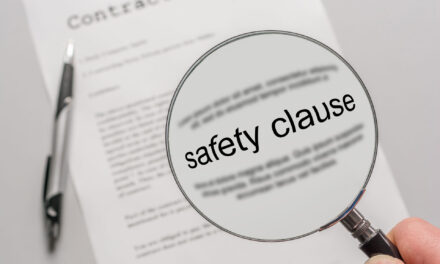This is the third episode in our new video series dramatizing the shared and different terms of occupancy under residential rental and lease agreements, and the controlling provisions.
The prior episodes covers rental market influences.
Establishing the tenant’s creditworthiness
On locating a prospective tenant for a residential unit, the landlord establishes the prospect’s creditworthiness before entering into either a rental or lease agreement. This is accomplished by requiring the tenant to fill out a credit application. [See RPI Form 302]
The credit application is referenced and attached as an addendum to any rental or lease agreement entered into by the landlord and tenant. The application is part of the leasing process which persuades the landlord to accept the applicant as a tenant.
Initially, the landlord uses the authorization provided by the tenant on the application to verify the tenant’s rental history, employment, credit standing and check-writing history.
If a prospective tenant has a poor credit rating or no credit rating at all, yet meets the landlord’s income requirements, the landlord may seek assurances in addition to the maximum security deposit allowed. These assurances include:
- a co-signer on the lease; or
- a guarantee agreement signed by a creditworthy person. [See RPI Form 553-1]
With third-party assurances, the landlord will receive full performance on the lease agreement from others when the tenant defaults on their rent or otherwise causes the landlord to incur a loss exceeding the security deposit. On a default by the tenant, the landlord may hold the co-signer liable, or collect their losses from the guarantor.
Critical provisions in residential rental and lease agreements
In return for the use and possession of the premises, the tenant pays the landlord rent until expiration of the lease, or periodic tenancy. The tenant agrees to pay a late charge when rent is not paid on the due date, or within the established grace period. [See RPI Form 551 §4 and Form 550 §4]
Also, the number of guests the tenant may have in their unit and the period of time over which their guests may visit is limited. [See RPI Form 551 §5.6 and Form 550 §5.6]
The tenant agrees to comply with all building or project rules and regulations established by any existing covenants, conditions and restrictions (CC&Rs) or the landlord. [See RPI Form 551 §6.1 and Form 550 §6.1]
The landlord and tenant agree who will pay or how they will share the financial responsibility for the unit’s utilities. Landlords of apartment buildings or complexes often retain the responsibility of providing water to the units. [See RPI Form 551 §6.2 and Form 550 §6.2]
In both rental and lease agreements, the tenant agrees to hold the landlord harmless from all liability for damages caused by the tenant or their guests. [See RPI Form 551 §7.1 and Form 550 §7.1]
Residential rental and lease agreements often contain provisions that restate the landlord’s and tenant’s statutory rights and duties.
For example, the rental agreement reiterates the landlord’s statutory obligation to furnish a tenant with:
- a security deposit refund;
- a notice of the tenant’s right to a joint pre-expiration inspection of the unit and delivery of an itemized statement of repairs/cleaning [Civil Code §1950.5(f)]; and
- a statement of security deposit accounting and an itemization of any deductions. [CC 1950.5(g)(1); see RPI Form 551 §2.4 and Form 550 §2.4]
Also, rental and lease agreements often advise tenants of their limited statutory right to make necessary repairs to the premises and deduct the cost from the rent when the landlord fails to make the repairs the tenant has brought to the landlord’s attention. [CC 1942; see RPI Form 551 §6.2 and Form 550 §6.2]
A rental or lease agreement prohibits a tenant from:
- using the premises for an unlawful purpose;
- creating a nuisance; and
- committing waste. [See RPI Form 551 §6.7, §6.8 and Form 550 §6.7, §6.8]
Editor’s note – Stay tuned! A new episode in this series will release each week.














